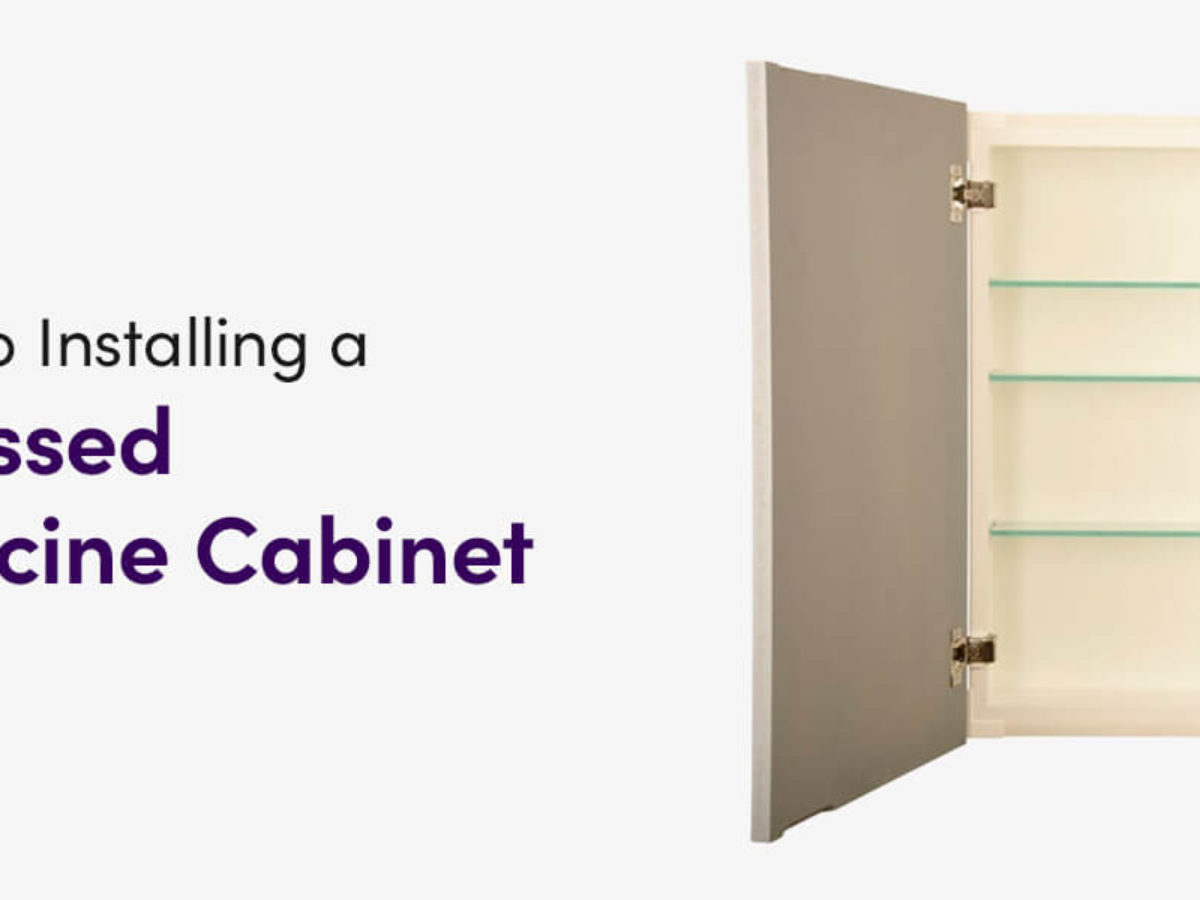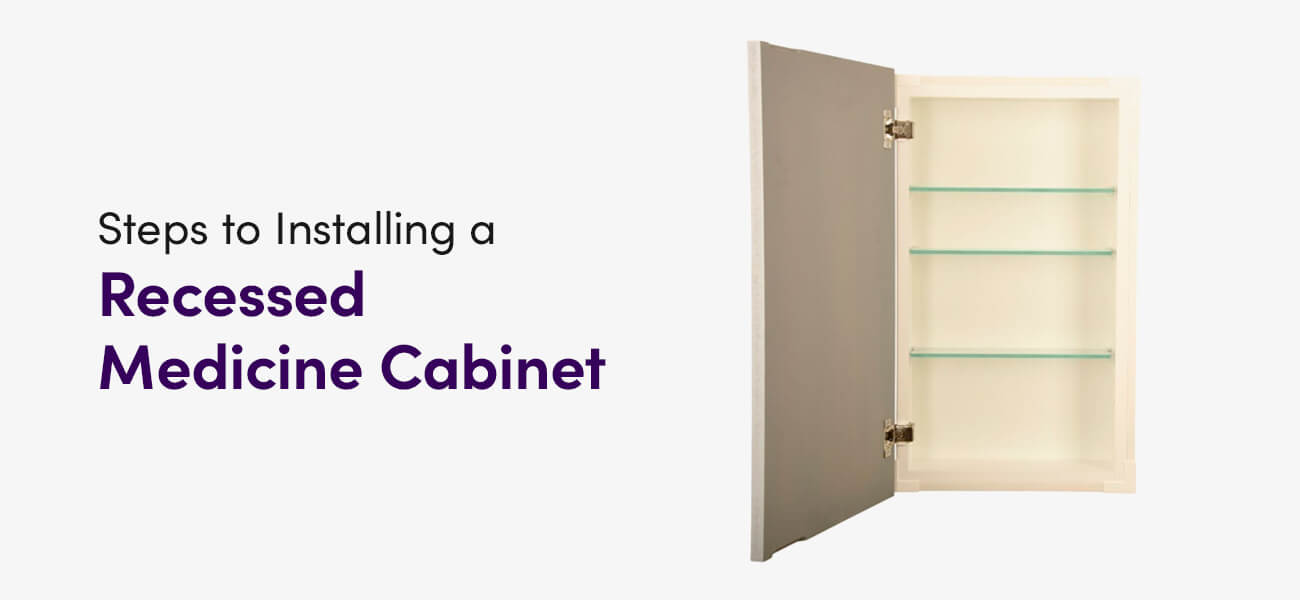Planning and Preparation: How To Surface Mount A Medicine Cabinet

Planning and preparation are essential for a successful medicine cabinet installation. Taking the time to gather the right tools and materials, carefully consider the location, and prepare the wall properly will ensure a smooth and professional-looking result.
Choosing the Right Location and Height
Selecting the ideal location and height for your medicine cabinet is crucial for both functionality and aesthetics.
The location should be convenient and easily accessible, allowing for easy access to your medications and toiletries. Consider the proximity to a sink, mirror, and electrical outlets for optimal usability.
The height of the cabinet should be comfortable for the user. Generally, the bottom edge of the cabinet should be at a height of 54-60 inches from the floor, ensuring easy access for most adults.
Measuring and Marking the Wall
Accurate measurements are essential for a precise installation.
1. Determine the Cabinet Dimensions: Carefully measure the width and height of your medicine cabinet.
2. Mark the Wall: Using a level and a pencil, mark the desired location on the wall. Ensure the marked area is level and aligns with the surrounding features.
3. Double-Check the Measurements: It’s crucial to double-check your measurements before proceeding to ensure a perfect fit.
Preparing the Wall Surface
A properly prepared wall surface is essential for a secure and durable installation.
1. Clean the Wall: Remove any dirt, dust, or debris from the wall surface using a damp cloth. Allow the wall to dry completely.
2. Repair Any Damage: Fill any cracks or holes with spackle or patching compound. Let it dry completely and then sand it smooth.
3. Prime the Wall: Apply a primer to the wall surface, especially if it’s a new or previously painted surface. Primer will help the adhesive bond better.
4. Allow the Primer to Dry: Allow the primer to dry completely before proceeding with the installation.
Mounting the Medicine Cabinet

Now that you’ve meticulously prepared the wall and gathered your tools, it’s time to embark on the exciting part: attaching the medicine cabinet. This step involves carefully mounting the mounting plate to the wall, ensuring it’s level, and then securing the cabinet to the plate.
Attaching the Mounting Plate
The mounting plate is the foundation of your medicine cabinet, so its placement is crucial. Start by holding the plate against the wall, aligning it with the marked location. Use a pencil to lightly mark the screw holes on the wall.
Using a Level
Before drilling, it’s essential to ensure the mounting plate is level. Use a level to check the plate’s horizontal and vertical alignment. Adjust the plate’s position as needed until it’s perfectly level.
Drilling Pilot Holes
To prevent the wall from cracking, it’s best to drill pilot holes before driving in screws. Using a drill bit slightly smaller than the screw diameter, drill pilot holes at the marked locations. The depth of the pilot hole should be slightly less than the screw length.
Securing the Mounting Plate
With the pilot holes in place, insert the screws into the holes and drive them into the wall using a screwdriver. Make sure to tighten the screws securely, ensuring the mounting plate is firmly attached. If the wall is drywall, you may need to use wall anchors for extra support.
Installing the Medicine Cabinet
With the mounting plate firmly secured, it’s time to install the medicine cabinet. Align the cabinet with the mounting plate, ensuring the holes on the cabinet align with the screws on the mounting plate.
Securing the Cabinet
Using a screwdriver, insert the screws through the cabinet holes and into the mounting plate. Tighten the screws securely, ensuring the cabinet is firmly attached. Be careful not to overtighten the screws, as this could damage the cabinet.
Final Check
Once the cabinet is installed, take a moment to double-check that it’s securely mounted and level. Use a level to ensure the cabinet is perfectly horizontal and vertical. If necessary, slightly loosen the screws and adjust the cabinet’s position until it’s level. Then, re-tighten the screws.
Finishing Touches

How to surface mount a medicine cabinet – You’ve successfully mounted your medicine cabinet, and now it’s time to put the finishing touches on your project. This includes connecting the cabinet to the electrical wiring (if applicable), installing the door and mirror, and cleaning and maintaining your new cabinet. Let’s dive into the final steps!
Connecting Electrical Wiring
If your medicine cabinet has an integrated light or other electrical features, you’ll need to connect it to the electrical wiring. This step should only be performed by a qualified electrician. Here’s what the process typically involves:
- Turn off the power to the circuit you’ll be working on. Use a circuit tester to confirm the power is off.
- Locate the junction box that supplies power to the medicine cabinet location.
- Connect the wires from the medicine cabinet to the wires in the junction box, matching the colors (black to black, white to white, ground to ground).
- Secure the wire connections with wire nuts or terminal screws.
- Turn the power back on and test the light or electrical feature to ensure it works properly.
Installing the Door and Mirror
Most medicine cabinets come with a pre-installed door and mirror. However, if yours requires separate installation, here’s how to do it:
- Align the door with the cabinet frame and ensure it hangs straight.
- Attach the hinges to the door and cabinet frame using the provided screws.
- Install the door handle or latch, following the manufacturer’s instructions.
- If your cabinet has a mirror, it will likely have pre-installed clips or brackets. Attach the mirror to the door using these clips or brackets.
- Test the door to ensure it opens and closes smoothly.
Cleaning and Maintenance
Regular cleaning is essential to keep your medicine cabinet looking its best and functioning properly. Here’s a simple cleaning routine:
- Wipe down the cabinet’s exterior with a soft, damp cloth. Avoid harsh cleaners or abrasives that could damage the finish.
- Clean the mirror with a glass cleaner and a microfiber cloth.
- If your cabinet has a light, dust the bulb and fixture regularly.
- Inspect the door and hinges for any signs of wear or damage. If necessary, tighten loose screws or replace damaged parts.
Decorative Touches and Accessories, How to surface mount a medicine cabinet
Once your medicine cabinet is installed, you can add some decorative touches to enhance its appearance and functionality. Here are some ideas:
- Add a decorative shelf above the cabinet to display small plants, decorative items, or even a framed photo.
- Install a small mirror on the wall next to the cabinet to create the illusion of more space and reflect light.
- Hang a small storage basket on the cabinet door to hold items like toothbrushes, toothpaste, or hairbrushes.
- Use a decorative storage box inside the cabinet to organize smaller items.
Installing a medicine cabinet is a common home improvement project, and surface mounting is often the easiest method. You’ll need to choose the right location, mark the wall, and then drill pilot holes for the mounting screws. Once the cabinet is secured, you can organize your supplies and medications.
If you’re looking for a way to store smaller items like hardware, craft supplies, or even medications, consider a plastic parts storage hardware and craft cabinet. These cabinets often feature drawers, shelves, and compartments for easy organization. Whether you choose a medicine cabinet or a storage cabinet, ensure you use appropriate mounting hardware and follow the manufacturer’s instructions for a secure and long-lasting installation.
Installing a medicine cabinet is a simple way to add storage and style to your bathroom. If you’re looking for a more robust storage solution, consider a freestanding cabinet like the Sauder Cottage Road Storage Cabinet , which offers ample space for toiletries and other essentials.
Once you’ve decided on your storage solution, make sure to use appropriate mounting hardware and follow safety guidelines for a secure installation.